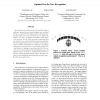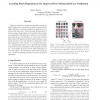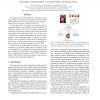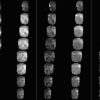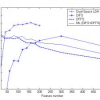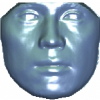CVPR
2006
IEEE
15 years 2 months ago
2006
IEEE
Researchers in psychology have well studied the impact of the pose of a face as perceived by humans, and concluded that the so-called 3/4 view, halfway between the front view and ...
CVPR
2006
IEEE
15 years 2 months ago
2006
IEEE
Most pose robust face verification algorithms, which employ 2D appearance, rely heavily on statistics gathered from offline databases containing ample facial appearance variation ...
CVPR
2005
IEEE
15 years 2 months ago
2005
IEEE
Over the last couple of years, face recognition researchers have been developing new techniques. These developments are being fueled by advances in computer vision techniques, com...
CVPR
2005
IEEE
15 years 2 months ago
2005
IEEE
This paper presents a method for face recognition across large changes in viewpoint. Our method is based on a Morphable Model of 3D faces that represents face-specific information...
CVPR
2005
IEEE
15 years 2 months ago
2005
IEEE
Researchers have been working on human face recognition for decades. Face recognition is hard due to different types of variations in face images, such as pose, illumination and e...
CVPR
2004
IEEE
15 years 2 months ago
2004
IEEE
Linear Discriminant Analysis (LDA) is popular feature extraction technique for face recognition. However, it often suffers from the small sample size problem when dealing with the...
CVPR
2003
IEEE
15 years 2 months ago
2003
IEEE
We propose a new approach for face recognition under arbitrary illumination conditions, which requires only one training image per subject (if there is no pose variation) and no 3...
CVPR
2003
IEEE
15 years 2 months ago
2003
IEEE
While traditional face recognition is typically based on still images, face recognition from video sequences has become popular recently. In this paper, we propose to use adaptive...
2
posts
with
2661
views
2661
views
 Homepage
Homepage 0
posts
with
0
views
0
views
 Homepage
Homepage 